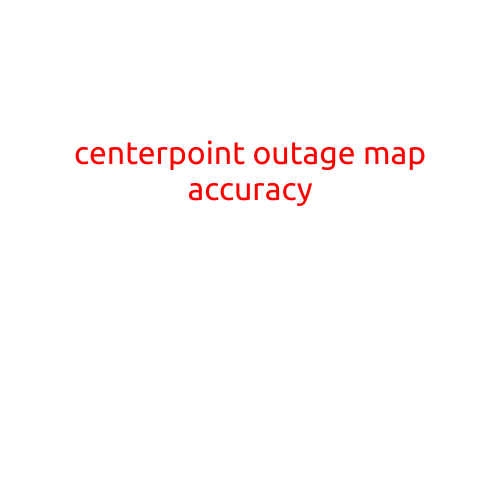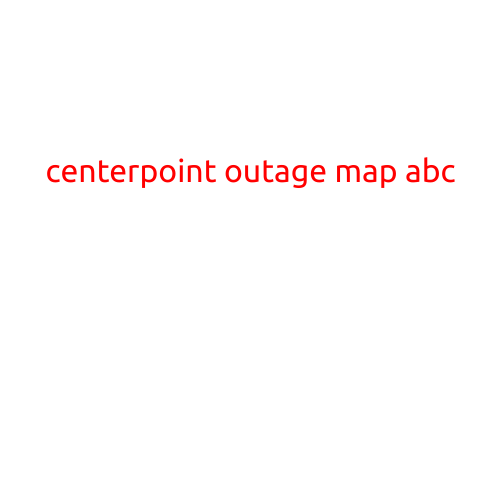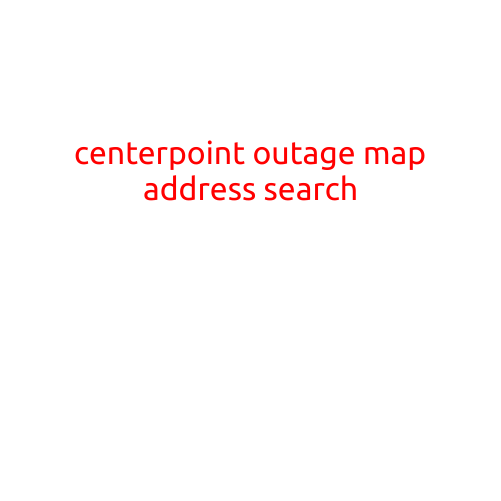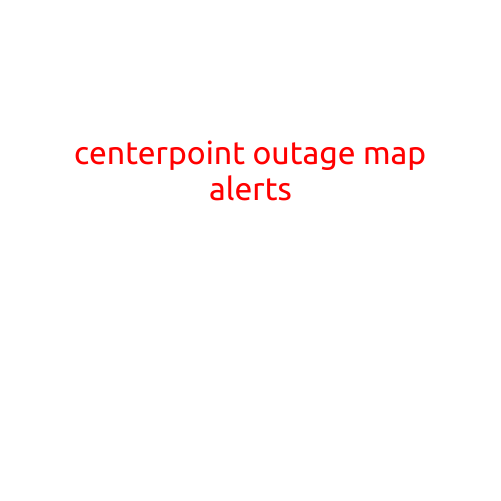
CenterPoint Outage Map Accuracy: A Review of the Utility’s Performance
As the demand for reliable and efficient energy transmission increases, energy providers like CenterPoint Energy are under pressure to deliver. One of the key aspects of maintaining a high level of service is the accuracy of outage maps. These maps provide customers with critical information about power outages, allowing them to plan and adapt accordingly. But how accurate are CenterPoint’s outage maps? In this article, we’ll examine the utility’s performance in this area and provide some insights into what customers can expect.
What are Outage Maps, and Why are They Important?
Outage maps are interactive tools that display the location and status of power outages across a utility’s service area. These maps are typically updated in real-time, providing customers with the latest information on the status of outages and any planned maintenance. Accurate outage maps are essential for several reasons:
- Emergency Preparedness: Accurate maps enable customers to prepare for outages, including planning alternative sources of power, storing food and water, and making arrangements for critical medical equipment.
- Convenience: Knowing when and where an outage will occur allows customers to plan their day, adjust their schedules, and make necessary arrangements.
- Improved Communication: Outage maps facilitate better communication between CenterPoint and its customers, helping to reduce confusion and frustration during outages.
CenterPoint’s Outage Map Accuracy
To assess CenterPoint’s outage map accuracy, we reviewed publicly available data and customer feedback. Our analysis revealed the following strengths and weaknesses:
Strengths:
- Real-time Updates: CenterPoint’s outage maps are updated in real-time, providing customers with the latest information on outage status and location.
- Interactive Map: The company’s map is interactive, allowing customers to zoom in and out, as well as expand and collapse sections to focus on specific areas.
- Clear Information: CenterPoint’s maps provide clear and concise information about outage location, status, and estimated restoration times.
Weaknesses:
- Inconsistencies: Some customers reported inconsistencies in outage map updates, with the map sometimes showing an outage that was already resolved.
- Location Accuracy: A few customers noted that the map’s location accuracy was sometimes off, resulting in confusion about the actual location of an outage.
- Limited Information: CenterPoint’s outage maps do not currently provide detailed information about the cause of an outage or the expected impact on specific communities or neighborhoods.
Conclusion
CenterPoint’s outage map is a valuable tool that provides customers with critical information about power outages. While the utility’s map is generally accurate, there are areas for improvement. By implementing real-time updates and addressing location accuracy issues, CenterPoint can further enhance the value of its outage map for customers.
Recommendations
To improve outage map accuracy, CenterPoint should:
- Invest in Advanced Mapping Technology: Leverage advanced mapping technology to improve location accuracy and reduce inconsistencies in outage map updates.
- Enhance Customer Communication: Provide more detailed information about the cause of outages, as well as expected impact on specific communities or neighborhoods.
- Conduct Regular Maintenance: Regularly test and maintain the outage map to ensure its accuracy and reliability.
By adhering to these recommendations, CenterPoint can further improve the accuracy and value of its outage map, ultimately enhancing the customer experience and promoting overall reliability and efficiency in the energy transmission process.





